本文由Hiroshi Nakamura & NAP授权mooool发表,欢迎转发,禁止以mooool编辑版本转载。
Thanks Hiroshi Nakamura & NAP for authorizing the publication of the project on mooool, Text description provided by Hiroshi Nakamura & NAP.
Hiroshi Nakamura & NAP:狭山湖畔的陵园对各种宗教和教派开放。它坐落在一个自然的环境中,毗邻水源保护林,处在一片茂密的森林前。我曾设想过一个反映人们依赖森林保存的水而活,又在死后回归森林的生活方式的建筑。当我发现森林是各宗教共同祈祷的主题后,我重新构思了这个被树木环绕且人们可在这面向森林祈祷的建筑设想。
Hiroshi Nakamura & NAP:Sayama Lakeside Cemetery is open to various religions and denominations. It is located in a nature-rich environment adjacent to the water conservation forest, and the site itself is in front of a deep forest. I envisioned an architecture that reflects on the way of life as it lives by the water conserved by the forest, and eventually returns to this place after death. Thereupon, I found the forest to be the subject of prayer that is mutual to various religions and conceptualized an architecture that prays to the forest while surrounded by trees.
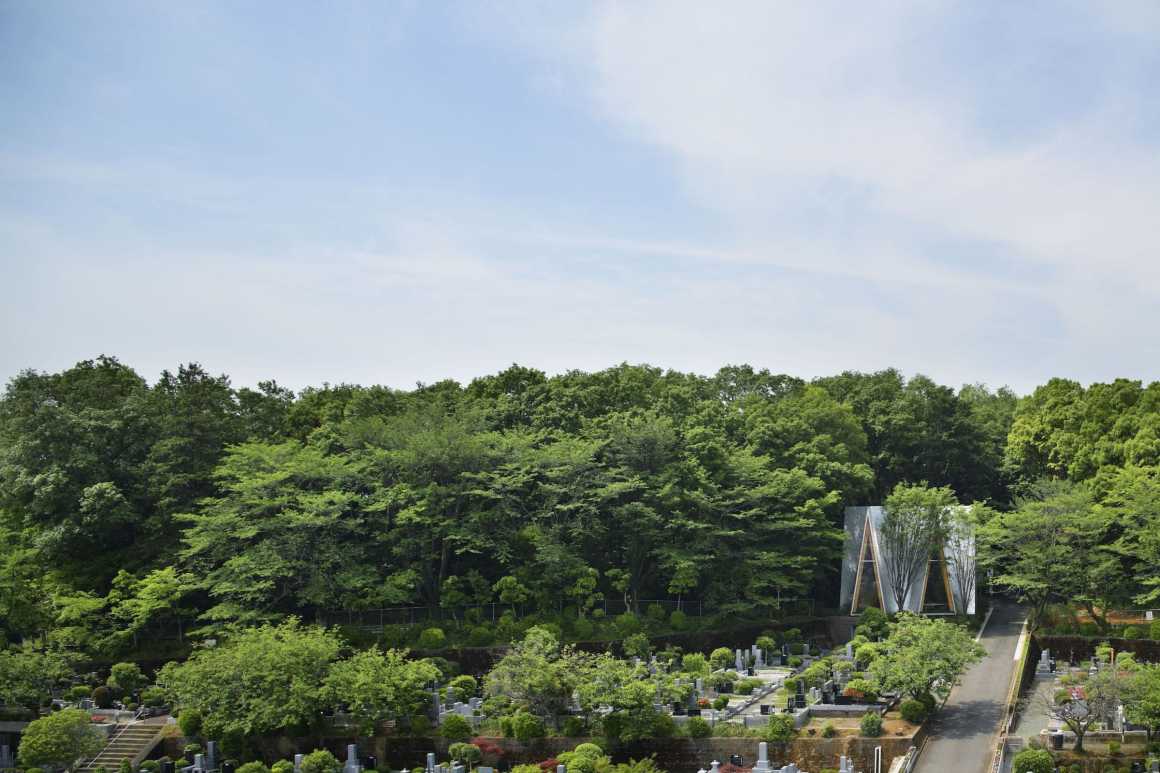
该地块是小三角形地块,旁边是一条交通流量较低的市政道路和一条几乎没有行人的非法定街道。因此,我决定将建筑墙体向内倾斜,以免破坏原场地的树枝树叶,形成了一个传统的日本Gassho风格的结构,该结构由多方放置的两个相互抵靠的倾斜梁共同构成。屋顶覆盖着铝制的瓷砖,每一块都由工匠手工制作,纹理如同涟漪。
The site is a small triangular plot of land that is adjacent to a municipal road with a low traffic and a non-legal street with almost no pedestrian. Therefore, I have decided to create a space that devotes to the forest that is transcendent in its existence, by tilting the wall inward to avoid the tree branches and leaves. It forms a traditional Japanese Gassho- style structure composed three-dimensionally as two leaning beams set against each other are developed in every direction. The roof is covered with cast-aluminum tiles with ripple-like textures each made by hands of craftsmen.
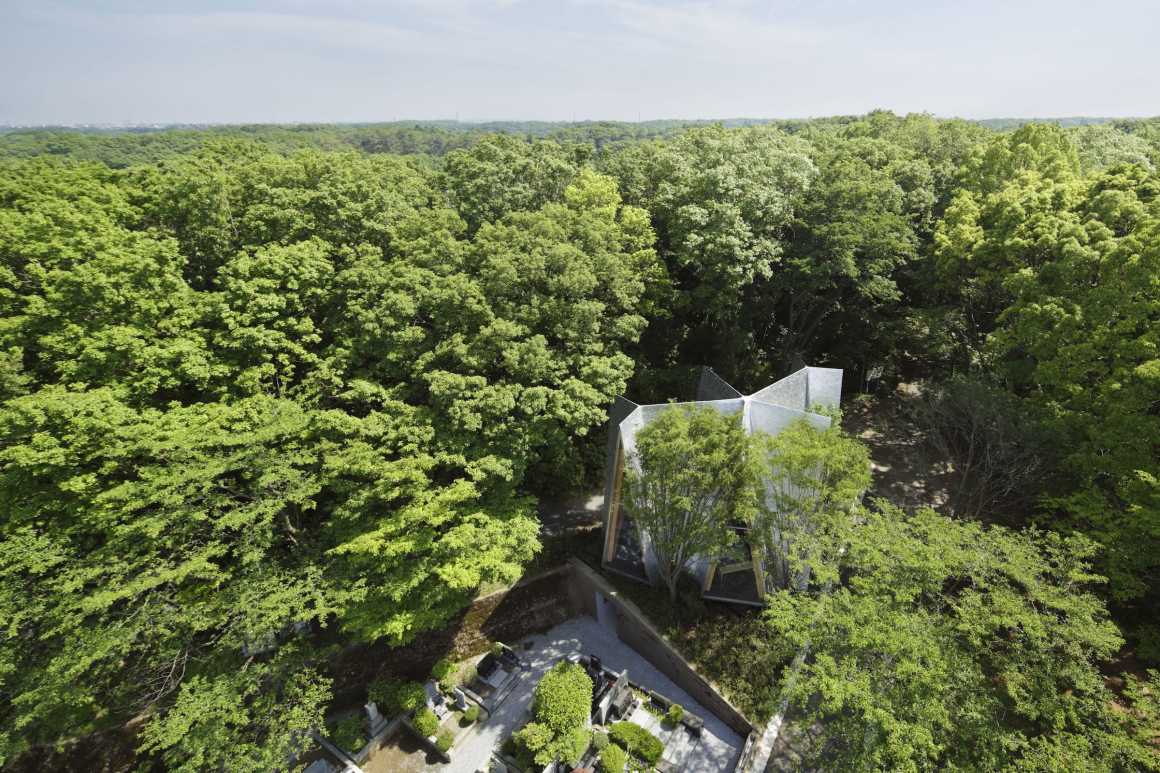

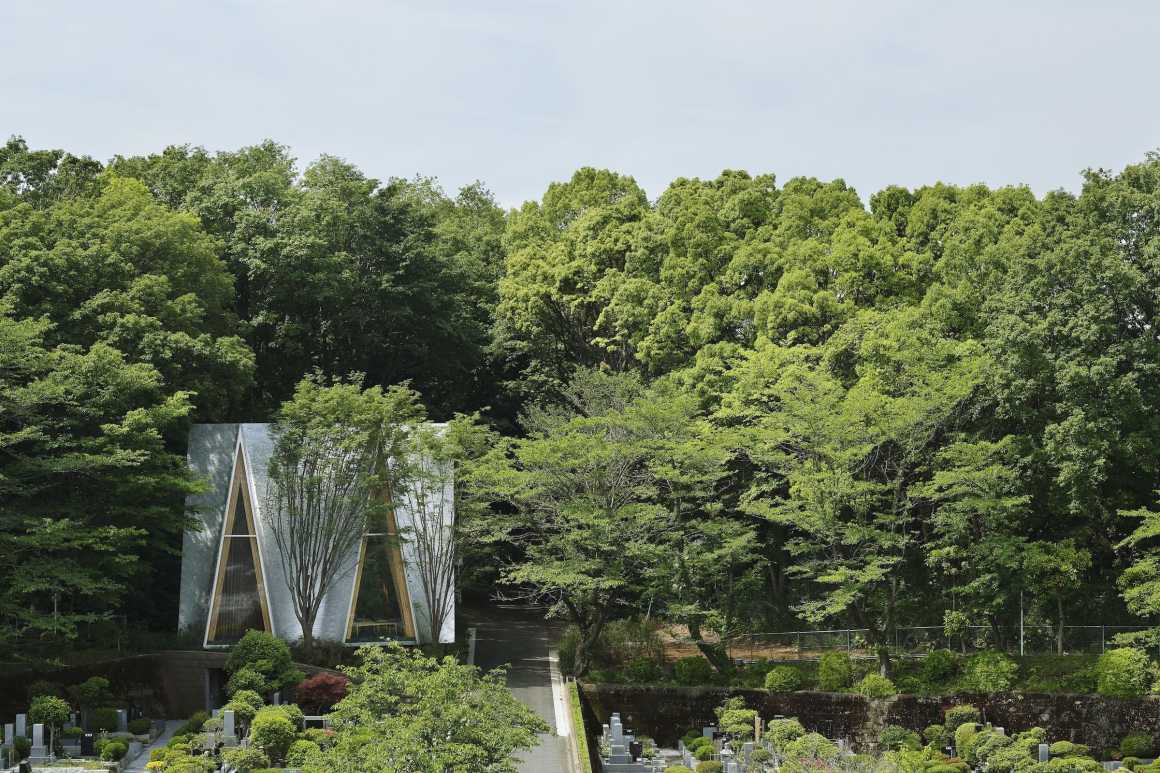

地板向森林倾斜1厘米,引导人们面向逝去的人前倾成祈祷的姿势。石板的图案和接缝向森林深处的消失点延伸,引导人们将注意力集中在森林上。人们在祈祷时,随着手指的轻轻接合,手里会形成一个小的温暖空间,似乎这一小块祈祷空间形成了建筑。当人们在祈祷时,对于那些深陷悲痛和无法慰藉的人来说,建筑又该如何抚慰他们呢?考虑到这一点,我设计了这些温柔环绕着他们的建筑,希望能起到支撑他们的意志的作用。
The floor inclined towards the forest by 1 centimeter guides people towards the departed and the forward bending posture for praying. The patterns and seams of the slate extend towards the vanishing point deep into the forest to help one concentrate the mind on the forest. When one prays, a small warm space is created within the hands as the fingers gently join. It seems as if that small space of prayer was taken out to form the architecture. As people pray, so does the architecture. For those who are in deep grief and inconsolable, how can architecture nurture them? With this in mind, I designed buildings that gently surround them and support their intentions.

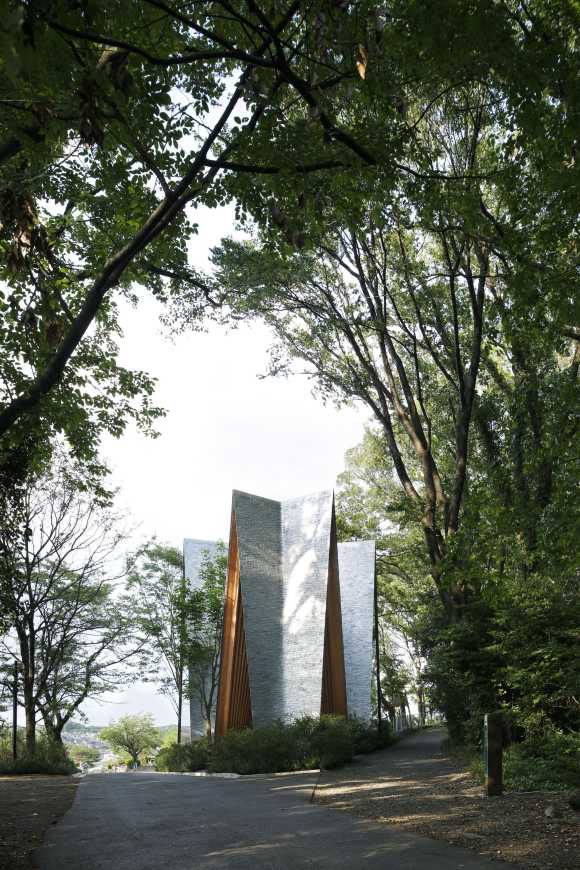
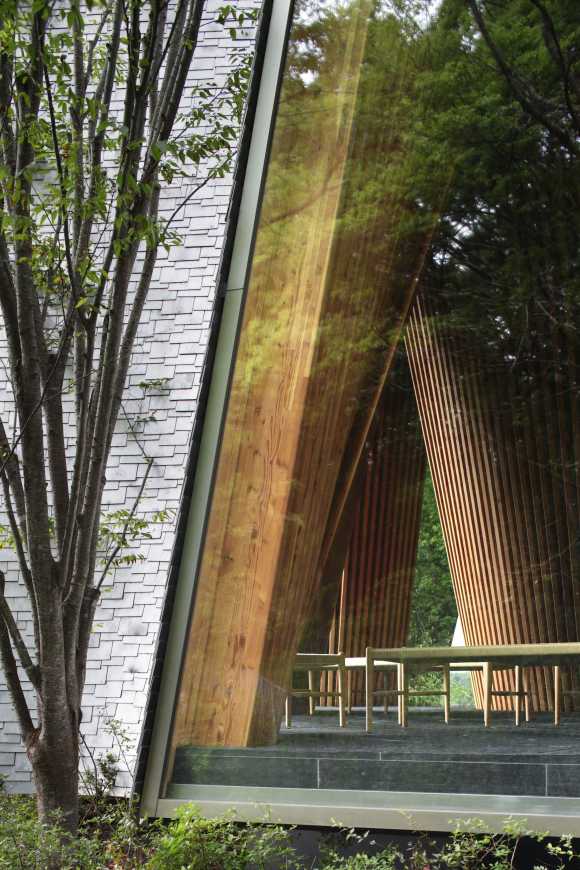
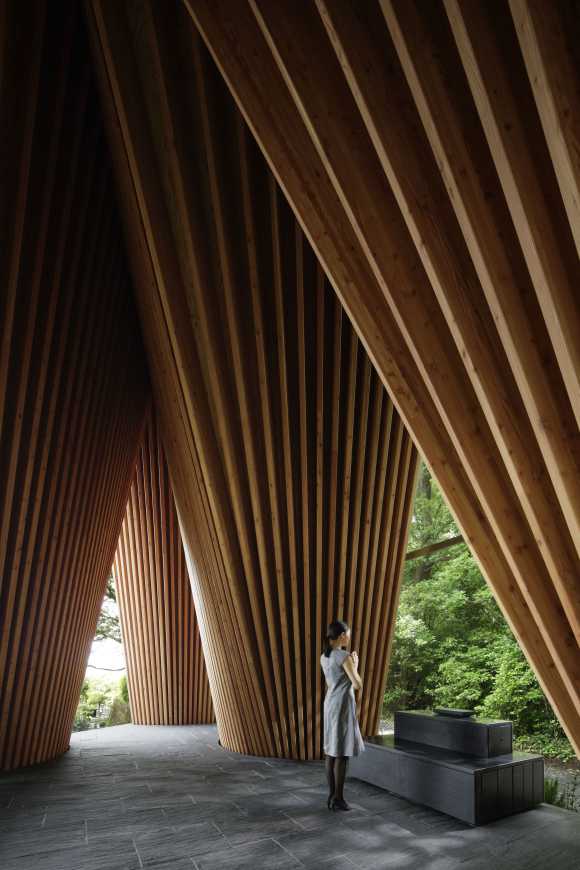



▼基地平面图 Site plan

▼建筑一层平面图 Floor plan

▼建筑剖面图 Section
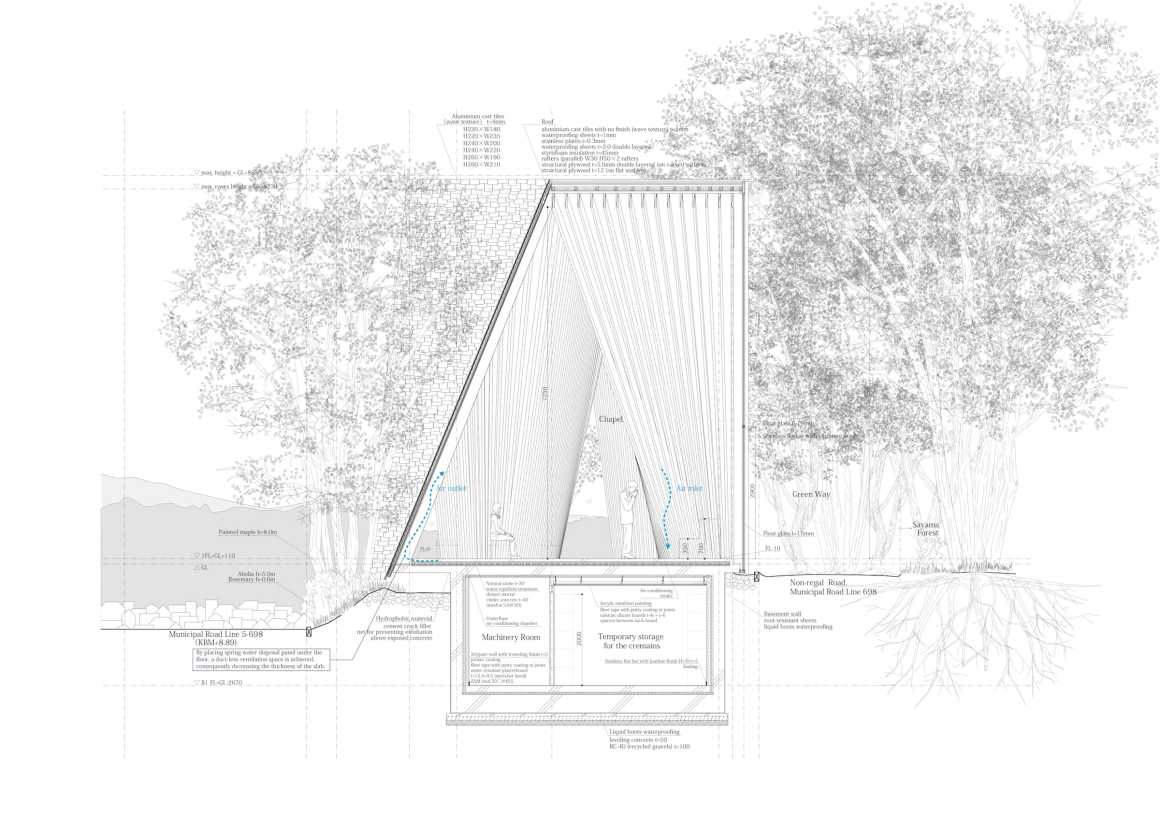
建筑设计: Hiroshi Nakamura & NAP
地点: 日本埼玉县
面积: 114.0平方米
项目年份: 2013
摄影: Koji Fujii / Nacasa & Partners Inc.
结构设计: Ove Arup & Partners Ltd。
承包商: Shimizu Corporation
Architects: Hiroshi Nakamura & NAP
Location: Saitama, Saitama Prefecture, Japan
Area: 114.0 sqm
Project Year: 2013
Photographs: Koji Fujii / Nacasa & Partners Inc.
Structure Design: Ove Arup & Partners Ltd.
Contractor: Shimizu Corporation
更多 Read more about: Hiroshi Nakamura & NAP,Nacasa & Partners Inc.







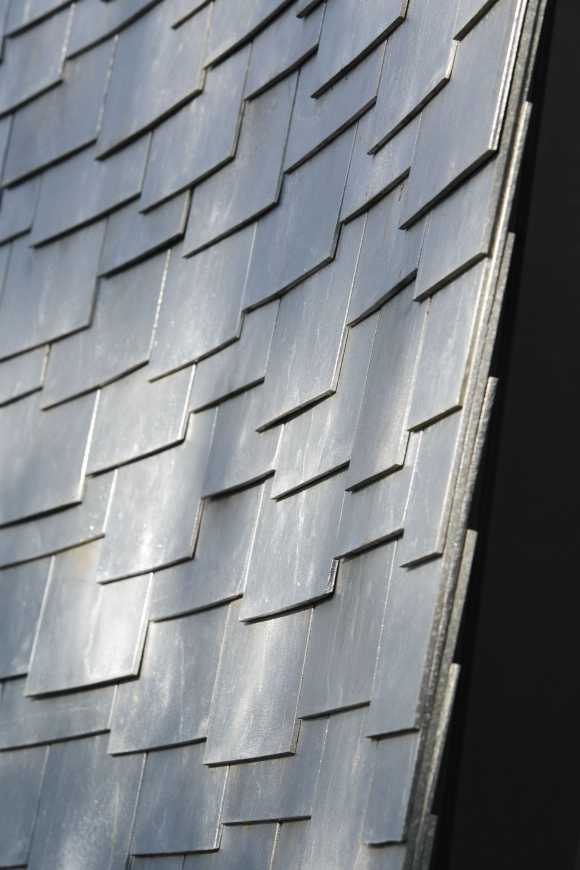




0 Comments